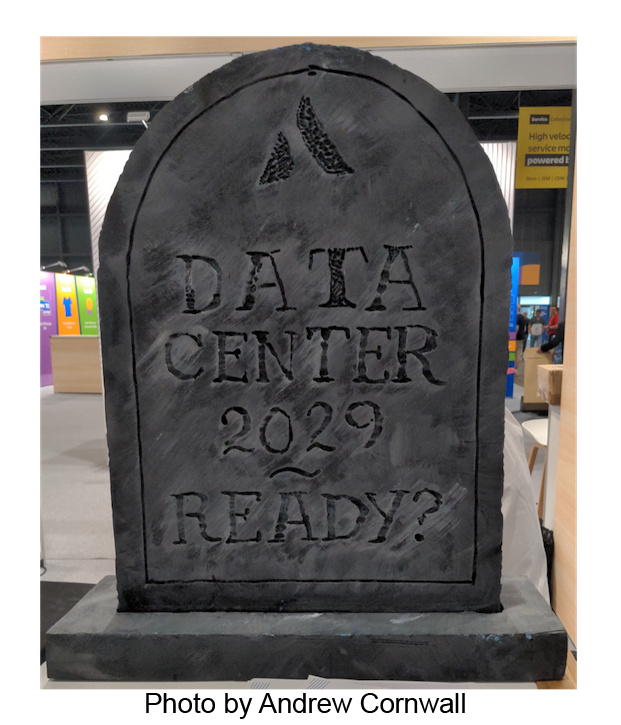From Developers To Services: The Impact Of Atlassian’s Latest AI Innovations
Atlassian’s latest announcements from Team Europe ’25 mark a pivotal shift in how enterprise software can shape the digital work experience. With strategic acquisitions and powerful AI-driven features, Atlassian is moving beyond traditional workflow tools to create a unified, intelligent interface for modern knowledge workers. This blog explores how AI innovations — such as Rovo, Teamwork Graph, and new browser technologies — are set to redefine productivity, collaboration, and strategic decision-making across organizations.
Atlassian Aims To Reassure DevOps As It Pivots To The Enterprise
Andrew Cornwall, Senior Analyst

Atlassian has been moving in this direction for a while, but it’s now focused on cementing its position as a workflow framework for enterprises — not just developers and operations. Still, a few announcements stood out that appeal to those who might otherwise be feeling neglected. Atlassian now bundles DX, Rovo Dev, Bitbucket, Bitbucket Pipelines, and Compass in its software collection. The newly acquired DX received a round of applause at the keynote, and it helps fill some of Atlassian’s critical gaps in developer metrics. Rovo Dev went GA, bringing AI assistance to the entire software development lifecycle, not just code generation. What makes or breaks AI, however, is how well it integrates with the interface. Rovo Dev currently offers GA integration with the command line interface, while Bitbucket and IDE integrations remain in beta. Jira integration is “coming soon.” The keynote didn’t allay concerns that Atlassian is ignoring Bitbucket, with only brief mentions and no announcements outside Rovo Dev.
Atlassian reiterated its September “ascend to cloud” message about the end-of-life timeline for its Data Center product, only a couple of years after it ended the Server product. Atlassian is betting that the advantages of Rovo and increased willingness to adopt cloud models will encourage customers to move away from on-premises infrastructure. Migration assistance, including tooling, may help end users. That offers little reassurance to partners that provide services needed in data centers but not cloud environments. Other partners, of course, will be happy to help you transition.
Rovo Everywhere For Everyone
Rowan Curran, Principal Analyst
Teamwork Graph interconnects Rovo answers and flows across both workstreams and (soon) enterprise assets. Atlassian knows that accurate, precise answers are where the value of agentic AI starts, and it’s betting on Rovo to deliver them. Rovo, combined with its recent acquisition of the Browser Company of New York, positions Atlassian to deliver the next generation of cloud-based enterprise work hubs. In Atlassian’s vision of the future, launch the browser with Rovo to understand and contextually execute daily work — all from a single interface with a pervasive chatbot that accompanies the user from the web to their desktop.
The next step is the Rovo desktop app, which will allow Atlassian to connect its cloud-only dream with the needs of some jobs to work locally. Expanding Teamwork Graph’s capabilities to deeply integrate with Atlassian’s asset management tools could enable enterprises to build a much more complete picture of their software and physical products, connect with their developer and broader talent efforts, and build out a self-contained (but extensible) platform for agentic efforts. While Atlassian is taking a very open and integrative approach to its tooling, there will still need to be substantial customer investment in feeding more data into Teamwork Graph to reap the benefits of relevancy and contextual understanding that it provides.
Empower Teams With Integrated Customer Insights And AI Agent Tools
Will McKeon-White, Senior Analyst
Atlassian’s Customer Service Management solution offers a familiar value proposition to Atlassian customers: connecting customer support to enterprise operations. In other words, it enables customer service agents to see where there’s an outage and helps ops/dev teams directly access customer feedback. The value of this kind of solution is well established, oddly enough, through the integration of unified communications (UC) platforms and contact center (CC) systems. But as with the UC+CC trend, success will depend on the disparate groups being both willing and able to collaborate effectively.
Rovo Studio is expanding to enable smarter citizen development of AI agents. For organizations to successfully make use of AI agents, they need to know how their organization actually works. One way to do this at scale is to give practitioners the ability to create their own agents. Atlassian is making this easier (and safer) through an expanded studio system, allowing adopters to build AI agents and forge apps. Studio also expands governance through tool enablement and control via “skills,” expanded model control, and data access restrictions. While the generation of these agents and apps seems straightforward and intelligent, there are a few dependencies. Graph quality, skills development, and experience in the Atlassian ecosystem, however, will determine how effective Studio users can be.
The Browser Company Defines Experience In SaaS
Julie Mohr, Principal Analyst
The announcement at Team ’25 Europe regarding the acquisition of The Browser Company marks a strategic pivot that could ripple across the IT service management (ITSM) landscape. Atlassian is moving deeper into the daily workflow of modern knowledge workers by acquiring the creators of Arc, a browser built for productivity, and Dia, a browser with embedded AI chat. These acquisitions will help Atlassian reimagine the browser as a critical interface layer that unifies digital work. By integrating the Browser Company’s innovations, Atlassian positions itself to control more of the user experience, moving beyond tickets and task tracking into how information is gathered, synthesized, and acted upon. With productivity and contextual intelligence becoming competitive differentiators in ITSM, this acquisition allows Atlassian to potentially bypass traditional OS-layer limitations and offer a seamless, AI-enhanced experience directly where users work.
This is a calculated response to industrywide shifts, as apparent in OpenAI’s announcement of the launch of its new browser, ChatGPT Atlas. As more vendors layer AI atop legacy systems, Atlassian’s strategy appears more foundational: It’s not just automating existing workflows but redefining how workflows are initiated and navigated. The browser becomes the operating environment, not just a tool. Given the widespread move toward AI-first service environments and unified knowledge platforms, Atlassian’s control over the browser could enable personalized automation, enterprise knowledge integration, and real-time service interactions all within a single, intelligent interface. In a market increasingly driven by experience, context, and immediacy, owning the interface may ultimately prove more powerful than owning the back end.
Rovo And AI As A Portfolio Messaging Theme
Barry Vasudevan, VP and Principal Analyst
Atlassian’s portfolio message centers on the promise of AI-driven benefits, using Rovo as the unifying theme across its diverse product set. In a market where acquisitions often lead to fragmented narratives, Atlassian positions Rovo and Teamwork Graph as the glue that connects its tools under a single, compelling story: automation that saves time and reduces effort by bridging the silos that often exist in a company. This approach gives buyers a clear sense of value — streamlined workflows, improved communication, and greater productivity — while reinforcing Atlassian’s commitment to innovation. By rallying its portfolio around AI, Atlassian creates a consistent, connected message that resonates across multiple audiences and simplifies how its growing ecosystem is perceived.
This strategy carries risks, however. AI as a message is a technology problem, not a business one. The question is whether a platform-centric AI message truly helps buyers make purchasing decisions or if it simply adds to the noise in an already crowded AI market. The narrative could easily lean more toward a technology pitch than a business outcomes story. Atlassian must ensure that its AI positioning continues to focus on the room for growth.
Strategic Decision-Making Powered By Integrated Support And AI Solutions
Margo Visitacion, VP and Principal Analyst
Atlassian’s announcement of the Strategy and Teamwork Collections demonstrates its vision of connecting all information workers. By leveraging Teamwork Graph and Rovo, Atlassian aims to provide teams with context-rich insights that facilitate better decision-making. At first glance, this suggests that Atlassian is advocating a bottom-up approach. Both collections expand the user interface beyond core developer experiences to encourage broader business adoption.
The Teamwork Collection offers robust capabilities that enhance collaboration among cross-organizational teams. Meanwhile, the Strategy Collection introduces essential top-down planning features through Focus, which helps identify strategic outcomes, alignment needs, and direct priorities. The Talent feature enables leaders to map strategies to resources, providing insights into capacity and consumption. Additionally, Align — the original portfolio management product — tracks delivery performance.
These new products position Atlassian favorably, but they still need time to mature. It’s noteworthy that Strategy was introduced at the end of the keynote, which may reinforce the perception of a bottom-up approach. Atlassian could benefit from placing it in a central position that encourages feedback and supports a consistent flow of information.
Let’s Connect
Have questions? Let’s connect and continue the conversation! Reach out to us through social media or Forrester clients can request a guidance session. Follow our blogs and research at Forrester.com.
